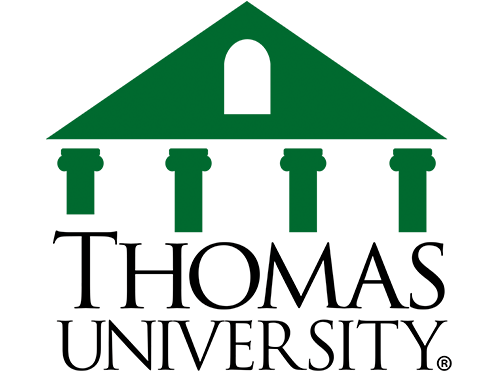Coronavirus (COVID-19)
Dear Night Hawks,
The following is Thomas University’s ongoing strategy for adhering to recommendations aimed at slowing the spread of the Coronavirus (COVID-19). Since the start of the pandemic, TU has consistently stated that we will follow the guidance of the CDC and other health care authorities. That is not changing. Healthcare experts continue to warn of other possible waves of infection that may accompany the regular flu season. Since there is no way to predict the path of the disease, TU will continue to monitor local infections and CDC guidance.
Thomas University is no longer requiring masks on-campus. However, individuals are encouraged to make their own decision about whether or not to continue wearing a mask. TU may change the mask requirements based on future CDC guidance and spread of infection. Please continue to check the website for updates.
In keeping with the requirements of the American Rescue Plan Act of 2021, institutions of higher education are required to “implement evidence-based practices to monitor and suppress coronavirus in accordance with public health guidelines.” Consequently, the university will take what it perceives as necessary steps consistent with such guidelines. Furthermore, it is possible that these guidelines will change as the year progresses based on guidance from the CDC. Please refer to the website for updates. https://www.thomasu.edu/coronavirus-covid-19/.
+Plan for Containment to Prevent Spread of Disease
While TU cannot prevent the spread of the coronavirus, we are taking steps to reduce the risk of COVID-19 infections. The front line for containment measure to prevent the spread of disease is in the cleaning regimen, which is codified in the NMRC COVID-19 Exposure Mitigation Protocols. National employees will focus on enhanced sanitizing and disinfecting of all CDC recognized touch points such as tables, doorknobs, light switches, etc. and exposure points, e.g. workspace surfaces, break areas, equipment, etc. Additionally, hand sanitizer is supplied and available in all University buildings.
As with any illness, it is expected that students who are running a fever will refrain from attending class, athletic practices and competitions, or student activities until they have been fever-free for 24 hours without medication.
If you develop symptoms of COVID-19, minimize contact with others and get tested for COVID-19, then proceed in accordance with the test results. It is strongly recommended that any student who suspects they may have COVID should wear a mask while in the presence of others to avoid potential spread of the infection.
If you test positive for COVID-19:
- Remain at home for 5 days from the date symptoms first appeared or, if asymptomatic, the date of the positive test. Stay away from others in the household as much as possible.
- Provide your professors, advisor, and (if applicable) coach with documentation of your situation to ensure that absences from class are recorded as medically excused.
- After 5 days, if you have no symptoms or your symptoms are resolving and you have been fever-free for more than 24 hours without the use of fever-reducing medication, you may resume normal activity. If symptoms are not improving or fever has not resolved, you should continue isolating until these criteria are met.
Employees experiencing any health adversity should follow normal institutional protocols for sick-leave.
+Plan for Shutdown if Necessary
In the event that the university is compelled to close campus, notice will come from the Provost with direction and guidelines as to how students are to vacate the dormitories. As both instruction and administrative support are online, those services will continue uninterrupted in order to ensure that students continue making adequate progress toward their degrees.
If students are asked to leave campus, all student financial aid will remain in place and unused rent for housing will be returned. TU offers courses on-line and on-ground and does not differentiate tuition on the basis of delivery mode. Consequently, no adjustments in tuition will be made.

